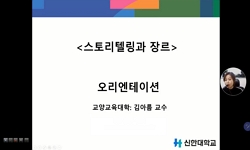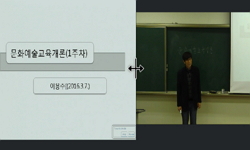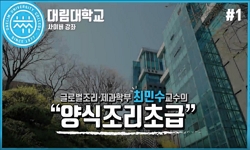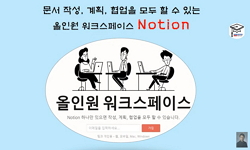Abstract A Study on the cognition of 'hsiao-shou(小說)' genre in late 1930's The purpose of this dissertation is to describe and analyze the aspect of experiments on 'narrative genre' in late 1930's. The Episteme of intellectual discourses in l...
http://chineseinput.net/에서 pinyin(병음)방식으로 중국어를 변환할 수 있습니다.
변환된 중국어를 복사하여 사용하시면 됩니다.
- 中文 을 입력하시려면 zhongwen을 입력하시고 space를누르시면됩니다.
- 北京 을 입력하시려면 beijing을 입력하시고 space를 누르시면 됩니다.
https://www.riss.kr/link?id=T12809232
- 저자
-
발행사항
서울 : 서울대학교 대학원, 2012
- 학위논문사항
-
발행연도
2012
-
작성언어
한국어
- 주제어
-
DDC
810 판사항(22)
-
발행국(도시)
서울
-
기타서명
Study on the cognition of 'hsiao-shou' genre in late 1930's
-
형태사항
vi, 206 p. : 삽화 ; 26 cm
-
일반주기명
참고문헌 수록
- DOI식별코드
- 소장기관
-
0
상세조회 -
0
다운로드
부가정보
다국어 초록 (Multilingual Abstract)
Abstract
A Study on the cognition of 'hsiao-shou(小說)' genre in late 1930's
The purpose of this dissertation is to describe and analyze the aspect of experiments on 'narrative genre' in late 1930's. The Episteme of intellectual discourses in late 1930's reconsiderd the crisis of western modern society. It also influenced on literary field. Reconsieration on western modern novel, which had been regarded self-evidently, was promoted actively. And introspections of the concept of 'novel' and experiments on 'new narrative genre' was progressing with that reconsideration on western modern novel.
Alterations of 'narrative genre' stemed from 2 conventions. The first was new understanding of traditional far-eastern narrative genre. This new understanding was affected by the discourse of traditionalism of the time. The second was the decolonized adoption of western literature. It was not a mere imitaion or transplantation but a active adoption which contained the process of appropriations and discards to adopt western literature at that time. Deliberate struggles to restructure western novel based on the distinct characteristics of colonial Korea appeared in various ways consequently.
New understanding of traditional far-eastern narrative genre was concretized by 2 narrative genres. The first was autobiographical novel which was prevalent suddenly in late 1930's. Lee Tae-jun could used a inimitable and experimental technique to narrate autobiographical story in the third person, because he adopted and modernized 'Tak-jeon(託傳)' which was one of the traditional far-east narrative genre. Therethrough he could overcame the danger of egocentric narration which was considered as a flaw of autobiographical novel. Futhermore not only Lee Tae-jun but also Chae Man-sik, Park Tae-won and Yoo Jin-oh used narrative technique to insert traditional Chinese poems and proses in their autobiographical novels. They exploited the effectivevness of intertextuality produced by inserting traditional far-eastern classical text to allude the theme which was censored by colonialist and not able to express in narrative level of story. It was a important achievement that they described their consciousness on social situation at the time with insertion of classical text, a typical code of traditional far-eastern narrative genre.
Secondly, historical novels popular at the time was worthy of notice. Lee Tae-jun, Kim Dong-in and Hyun Jin-geon wrote historical novels distinct from previous historical novels, with adopting 'Ya-dam(野談)' of Kim and Hyun, 'Sa-jeon(私傳)' of Lee, each one of the traditional far-eastern narrative genre. They took a profound interest in recalling historical figures excluded in official history-narration and reinterpreting official history-narration critically. Especially it was remarkable the documented historical novel in previous period was transformed into invented historical novel at the time. This was an adoption of history-narration which was a feature of far-eastern narrative genre, and also a result in reflection of episteme characterized by uncertainity at the time.
Appropriations of western 'novel' based on the decolonized adoption of western literature was concretized by 2 experimental narrative genre. The first were family history-chronicle novels. These novels were not based on affection of western family history-chronicle novels as previous studies have suggested, but rather based on discussion about 'asiatic mode of production' between conversioned socialists including In Jung-sik, and adoption of Pearl Buck's works. Family history-chronicle novels written by Kim Nam-cheon, Han Seol-ya and Lee Gi-young were quite different from western family history-chronicle novels consequently. These writters focused on colonialized modernization in the period of enlightment and distinct characteristics of colonial Korea with inserting digressions and using episodic plot. Futhermore they used non-oedipal plot such as using runaway-motif and unfinished plot so that their novels were distinct from western family history-chronicle novels which was composed based on family romance.
The second was experiment on multiple viewpoint to restore the polyphony of narrative genre. Especially this appeared on works of writters who were affiliated KAPF previously, since they tried to overcome limitations of socialist realism novel. Kim Nam-cheon tried to acquire viewpoint of the others using multiple focuslization. Han Seol-ya tried to make polysemi exploiting possiblities of series-novels. And Lee Gi-young produce polyphonic text which could contained changed thoughts of subjects using discussion-form. It was worthy of notice that they experimented to restore polyphonies, overlooked by themselves previously, all together. Futhermore Kim Nam-cheon experimented 'Roman Somme' based on adoption of Honoré de Balzac and Albert Thibaudet's works inimitably. Kim was able to embody the characters who changed in overdeterminated colonial society consequently. Hence he was able to approach overdeterminated reality in colonial Korea stereoscopically.
Late 1930's period was regarded commonly as 'The Period of Transition' in literary history. This term suggested that the literary central thought did not exist in this period due to the Sino-Japanese War and disbandment of KAPF. Paradoxically rapid social change, however, triggered reflections of modern narrative genre originated in western. Hence introspections about previous narrative genre and experiments on new narrative genre progressed animatedly in that period. It was concretized by new understanding of traditional far-eastern narrative genre and the decolonized adoption of western literature to seek new narrative genre. Therethrough experiment on narrative genre in that period could develop a critical thought to synthesize western 'novel' and far-eastern traditional 'Mun(文)'. Experiments on narrative genre in late 1930's, hence, have provided a diversity of thoughts about inimitable modern korean novels distinct from western 'novel'. It is notable that this experiments and introspections did not only produce discourses on narrative genre but also practical writing of novels.
This dissertation examined the consciousness about genre in late 1930's to overcome absolutization of the western concept of 'literature', which have functioned as premise of modern literary studies. This dissertation revealed that modern korean novels in this period were formed from interrelation between western 'novel' and far-eastern 'Mun(文)'. This means that modern korean narrative genre had inimitable features. Outcomes of this dissertation suggests that modern korean literary studies should try to overcome the western-centrism and to investigate distinct characteristics of modern Korean narrative genre.
Key-words: genre, mode, 'mun(文)', novel, decoloniality, appropriation, intertextuality, autobiographical novel, 'ya-dam(野談)', 'tak-jeon(託傳)', 'sa-jeon(私傳)', historical novel, family history-chronicle novel, family romance, non-oedipal narrative, polyphony, Roman Somme
Student number: 2006-30715
국문 초록 (Abstract)
국문초록 1930년대 후반기 소설 장르 인식 연구 본 논문은 1930년대 후반기 소설의 장르적 실험 양상을 규명하는 것을 목적으로 하였다. 1930년대 후반기 담론 장을 관통하는 에피스테메는 ...
국문초록
1930년대 후반기 소설 장르 인식 연구
본 논문은 1930년대 후반기 소설의 장르적 실험 양상을 규명하는 것을 목적으로 하였다. 1930년대 후반기 담론 장을 관통하는 에피스테메는 서구적 근대의 위기와 이에 대한 성찰로 볼 수 있다. 이러한 당시 담론 장의 논의는 문학 장에도 큰 영향을 미쳤다. 자명한 것으로 간주되어온 서구 근대 소설 장르 개념에 대한 성찰이 광범위하게 진행되었으며, 이는 곧 기존의 소설 장르론에 대한 성찰과 새로운 소설 장르에 대한 실험 및 모색의 계기로 작동하였다.
이 과정에서 소설 장르의 변화는 크게 두 가지 요소를 통해 추동되었다. 첫째, 당시 활발히 전개된 일련의 전통론의 영향 속에서 조선 및 동양의 고전 서사 장르에 대한 재인식이 진행되었다. 이는 동아시아 서사의 전통 속에서 새로운 소설 장르를 모색하려는 작가들에게 중요한 시사점을 제공해주었다. 둘째, 서구문학의 탈식민적 수용이 진행되었다. 이 시기 서구문학의 수용은 단순한 이식과 모방의 과정이 아니라, 독특한 문제설정 속에서 일련의 전유와 폐기의 과정을 수행하는 능동적 수용의 과정을 통해 진행되었다. 그 결과 서구의 ‘novel'을 조선적 특수성에 입각하여 재구성하려는 의식적인 고투가 다양한 방식으로 표출되었다.
조선 및 동양의 고전 서사 장르에 대한 재인식은 크게 두 가지 소설 장르의 현재화를 통해 구체적으로 구현된다. 첫째, 1930년대 후반기 급증한 자전적 소설이다. 이태준의 경우 3인칭 시점을 통해 자신의 자전적 이야기를 서술하는 독특한 실험 양상을 보여준다. 이는 조선 고전 서사 장르 중 ‘탁전’을 현대적으로 변용한 결과로 볼 수 있다. 그 결과 이태준의 자전적 소설은 자칫 자기중심적 서술의 위험에 빠질 수 있는 일반적인 자전적 소설의 문법의 한계를 극복하는 성과를 낳고 있다. 더불어 이태준은 물론, 채만식, 박태원, 유진오 등은 자전적 소설에 한시나 동양 고문을 삽입하여 상호텍스트성을 발현시키는 서술 기법을 사용하고 있다. 이들은 스토리의 층위에서는 표출될 수 없는 작품의 주제를, 삽입된 동양 고전 텍스트를 통해 환기시키는 서술 전략을 활용한다. 이는 고전 텍스트의 삽입을 장르적 규범으로 삼는 고전 서사 장르의 특성을 활용하여, 당대 시대상황에 대한 작가의식을 우회적으로 표출하는 성과로 나아갔다는 점에서 그 의의가 크다고 할 수 있다.
둘째, 이 시기 활발히 창작, 유통되던 역사소설이 주목된다. 이태준은 ‘사전’ 장르의 수용을, 김동인과 현진건 등은 ‘야담’ 장르의 수용을 통해 이전 시기의 역사소설과는 구별되는 독특한 장르적 모색을 수행한다. 이들은 공식적인 역사서술에서 배제된 인물에 대한 복원이나, 공식적 역사서술에 대한 비판적 재해석 등을 주로 보여준다. 특히 이 시기 역사소설은 이전 시기 기록적 역사소설에서 창안적 역사소설로 급변하는 장르적 변화 양상이 두드러진다. 이는 동양 고전 서사가 지니는 역사서술적 특성을 변용한 것으로, 당대 불확정성을 특징으로 하는 에피스테메가 장르적으로 투영된 결과로 볼 수 있다.
서구문학의 탈식민적 수용을 통한 서구 'novel'의 조선적 전유의 기획은 크게 두 가지 소설 장르의 실험과 모색으로 구체화된다. 첫째, 이 시기 활발히 창작된 가족사 연대기 소설이다. 이들 작품은 기존의 통설인 최재서의 토마스 만 등의 서구 가족사 연대기 소설의 영향 속에서 창작되기 보다는, 오히려 인정식을 비롯한 전향 사회주의자 그룹들의 아시아적 정체성에 대한 논의와 펄 벅의 수용 과정 속에서 창작된 것으로 판단된다. 그 결과 김남천, 한설야, 이기영 등의 가족사 연대기 소설은 서구의 그것과는 상이한 양상으로 나타난다. 우선 이들 작품은 삽화적 구성과 여담의 삽입을 통해 개화기 식민지 근대화 과정의 모순과 조선적 특수성을 압축적으로 표현하는 것에 초점을 맞춘다. 나아가 서구 가족사 연대기 소설의 일반적인 구성 원리인 가족 로망스와는 달리, 가출 및 미완의 형식을 통한 비 오이디푸스 서사 구조를 차용하고 있다는 점이 주목된다.
둘째, 중층적 시각의 도입을 통한 소설 장르의 다성성 복원을 위한 실험이 두드러진다. 이는 특히 과거 사회주의적 리얼리즘에 입각한 소설 장르론의 한계를 극복하려던 일련의 카프 계열의 작가들에게서 뚜렷하게 나타난다. 김남천의 복수초점화 기법의 사용을 통한 타자적 관점 도입의 실험, 한설야의 연작 형식의 실험을 통한 다의적 해석의 추구, 이기영의 토론체 형식을 통한 주체의 사유 변화와 다성적 텍스트의 구상 등이 이에 해당한다. 이들은 공통적으로 과거 이들이 간과했던 소설 장르의 다성성 복원을 위한 다양한 실험을 수행한다는 점에서 주목된다. 특히 김남천의 경우 발자크와 알베르 티보데의 소설 장르론을 독특하게 변용한 ‘총화소설’을 실험한다. 그 결과 중층적인 현실의 장(場) 속에서 변화하는 인물을 형상화할 수 있었고, 이를 통해 중층적인 식민지 현실에 대한 입체적 접근을 수행할 수 있었다.
1930년대 후반기는 문학사에서 흔히 ‘전형기’로 인식된다. 이는 이 시기를 카프의 해소 및 중일전쟁의 발발 등으로 인해, 더 이상 문학적 주조가 존재하지 못했던 시기로 파악하는 것으로 볼 수 있다. 그러나 역설적으로, 이 시기 급격한 사회적 변화는 과거 서구적 근대 소설 장르의 개념에 대한 성찰의 계기로 작용할 수 있었다. 이러한 기존 소설 장르에 대한 성찰과 새로운 소설 장르에 대한 실험 및 모색이 활발히 진행된 것이 1930년대 후반기이다. 이때 장르 변화는 조선 및 동양의 전통 서사의 재인식과 서구문학의 탈식민적 수용의 두 가지 계기를 통해 구체화되었다. 그 결과 이 시기 소설의 장르적 실험은 서구의 'novel'과 조선 및 동양의 고전적 ‘문(文)’을 종합하려는 문제의식으로 발전할 수 있었다. 이러한 1930년대 후반기 소설의 장르적 실험과 모색을 통해 기존의 서구 근대 소설 장르론으로 환원되지 않는 독특한 조선적 근대 소설에 대한 고민이 풍부화 될 수 있었다. 특히 이들의 문제의식은 단순히 소설 장르론적 측면에 국한된 것이 아니라, 구체적인 작품을 통한 형상화로까지 나아갔다는 점에서 그 의미가 더욱 강조되어야 할 것이다.
본 논문은 기존의 근대 문학 연구의 관행인 서구의 'literature' 개념의 절대시가 지니는 한계를 극복하기 위한 문제의식에서 출발하였다. 이를 위해 구체적으로 1930년대 후반기 소설 장르 인식을 검토함으로써 조선의 근대 소설 장르가 서구의 'novel'과 조선 및 동양의 ‘문(文)’간의 갈등과 충돌을 통해 형성되고 굴절되는 특수한 성격을 지녔음을 확인할 수 있었다. 이러한 본 논문의 성과를 통해 기존 근대 문학 연구의 서구 편향성을 극복하고 조선 근대 소설 장르의 특수성을 해명하기 위한 단초를 제기할 수 있을 것으로 기대된다.
핵심어: 장르, 양식, ‘문(文)’, 노블(novel), 탈식민성, 전유, 상호텍스트성, 자전소설, 탁전(託傳), 사전(私傳), 역사소설, 가족사 연대기 소설, 비 오이디푸스 서사, 가족 로망스, 다성성, 총화소설













